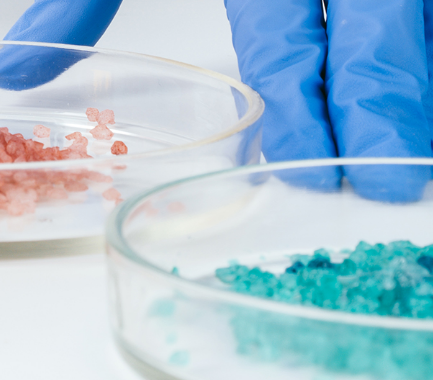Your contact
PENPET-Team - Hamburg

Tim Meister
Sales
Tel. +49 (0) 40 - 675 7 99 40
sales@penpet.de
Get in touch with us.
Methyl acrylate
With an annual production of approx. 200,000 tons, methyl acrylate is one of the most important acrylic esters and represents a classic raw material for the chemical industry. The colorless liquid is still mainly obtained in large-scale processes by direct esterification of methanol and acrylic acid. In addition, however, promising production methods from renewable raw materials are already being tested.
Methyl acrylate is used in numerous organic chemical processes to produce acrylic fibers, modacrylic fibers, coatings and adhesives. It is also used in organic syntheses and in the production of other intermediate products. A good quarter of the amount of methyl acrylate produced worldwide is used for the production of 2-dimethylaminoethyl acrylate, which improves the water solubility, basicity and other properties of products such as resins and paints.
You can easily and reliably order the required amount of methyl acrylate from PENPET. We look forward to receiving your inquiry for an individual offer. Delivered as a liquid in tank containers.
CAS no. 96-33-3
EINECS no. 202-500-6
Molecular formula: C₄H₆O₂
Synonyms: Methyl acrylate, methyl propenoate, methyl propenoate
Application examples: Manufacture of acrylic fibers, modacrylic fibers, coatings, varnishes, adhesives and other synthetic products
More Information
Methyl acrylate is an ester made up of two components. This becomes particularly clear from its other designation methyl acrylate. The two starting materials acrylic acid (also known as propenoic acid) and methanol form a bond by splitting off water and forming the so-called ester group. Under certain reaction conditions, both the dissolution of the methyl acrylate into these starting materials and the further construction of more complex structures within the framework of a polymerization are possible.
Methyl acrylate is a colorless liquid with an unpleasant, pungent odor. It is readily soluble in organic solvents, but only slightly to moderately soluble in water. The liquid and the vapors of the methyl acrylate are highly flammable and must be kept away from sources of ignition.
Because of its greater density, the compound's vapors are heavier than air and may spread undetected along the ground. This poses the risk of remote ignition. The unstabilized vapors can also polymerize easily, thereby blocking pipes, valves and ventilation ducts.
Greater caution is required when storing methyl acrylate. The volatile liquid easily converts to flammable and explosive vapor-air mixtures. In addition, contact with strong oxidizing agents and strong acids and bases leads to violent reactions with the risk of fire and explosion.
Since methyl acrylate also tends to polymerize spontaneously, it is usually provided with a stabilizer such as hydroquinone. The effects of heat, light and contact with peroxides increase the tendency towards spontaneous polymerization. Methyl acrylate should therefore be stored at temperatures below +30 °C and out of direct sunlight.
Contact with methyl acrylate causes skin irritation and serious eye irritation and may trigger an allergic skin reaction. Methyl acrylate should only be used in well-ventilated areas or outdoors as inhalation of its vapors can cause respiratory irritation and poisoning. Ingestion of the compound leads to organ damage, but no carcinogenic effects are known. Burning and heating methyl acrylate gives off other hazardous fumes and gases such as carbon monoxide.
Due to its skin, eye and mucous membrane irritating properties, methyl acrylate should be stored closed. Although methyl acrylate can be degraded in the environment, it is harmful to aquatic organisms and is considered to be clearly hazardous to water, so a
